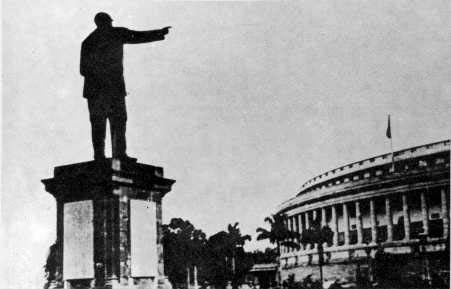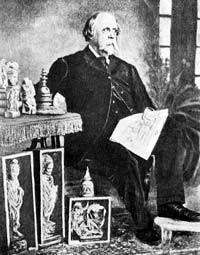S Kumar
There are mainly two ways of establishing democracy, one by direct democracy and another by indirect or representative democracy.
Usually, only small societies follow direct democracy where most of the decisions for the whole society are taken by directly calling people and seeking their opinion by voting. In some countries like Switzerland, this method is used. Even in large societies referendum is used for some policy initiatives.

The second way of establishing democracy is through indirect means by electing representatives who then make policy decisions on behalf of their respective constituencies, and hence it is also called representative democracy. Through a long evolution process during enlightenment period, representative democracy has developed into mainly two forms i.e. parliamentary democracy and presidential democracy.
The Constitution of India establishes a parliamentary democracy system in India. However, neither the existence of a President can make a system of Governance a Presidential system, nor the existence of a Parliament can make the system of Governance a Parliamentary system.
Under the original plan, the President of India was assigned the Nominal Head of the State, while the Prime Minister with the Council of Ministers was given all the necessary power of the Executive. Article 53 vests all the executive powers of the Union in the President. Further, Article 74(1) mandates that the Council of Ministers with the Prime Minister as its head shall aid and advise the President to exercise all the power. Further, the 42nd Amendment made it binding on the President to follow the advice of the Council of Ministers, although still some power like the power to pardon, power during emergency remains with the President.
The Constituent Assembly chose the Parliamentary system over the Presidential System as it provided for a government directly responsible to the legislature and the people of India had some experience in the working of the Parliamentary system.
So, why is India is called a Parliamentary democracy? First, the Parliament is directly elected by adult citizens, through direct voting. Second, the executive with PM and Council of Ministers are directly elected and can be removed anytime by a simple majority vote in Parliament; and any executive member must become a member of parliament within 6 months of appointment. Third, most importantly, all the necessary executive power lies with the Prime Minister and Council of Ministers while continuing as members of Parliament.
How is the Parliamentary system different from the Presidential system? First, the President is directly elected by the citizens. Secondly, the executive team is appointed by the President and the executive can only be re-elected or removed after the General election and not by simple majority in the Legislature. Thirdly, the necessary executive power remains with the President while legislative power remains with the Legislature or Parliament.
I started the article stating that neither existence of the President can make a system of Governance a Presidential system, nor the existence of Parliament can make the system of Governance a Parliamentary system.
To substantiate this argument, what if an advisory body, maybe an expert body, legally institued with Constitutional power, is given the task to advise the President in the Presidential system and the President is bound to follow the advice of the expert body: then for all official purposes, the Executive power is transferred to the Advisory body and effectively the Advisory Body will be ruling the nation. Hence, calling such system as the Presidential system would be completely wrong.
Similarly, under a Parliamentary system, if an advisory body (or expert body) legally instituted with Constitutional power is given the task to advise the Parliament (and its members), and the Parliament and its members are bound to follow the advice of the expert body: as the executive or government members emerge only after parliamentary membership, then for all official purposes, the Executive power is transferred to the Advisory body, and effectively the Advisory Body will be ruling the nation. Further, in such a system, the legislative power is also transferred to the advisory body. Hence, calling such a system as a Parliamentary system would be completely wrong. Additionally, it would be wrong to call such system as a democracy because legislative power is also transferred to the advisory body.
The problem gets more aggravated under the above-mentioned situation if the advisory body has no accountability to anyone and no responsibility. The above example is given to show that an exactly similar situation is prevailing in Indian system of Governance after damaging the fundamental structure of the Constitution.
The Parliament of India with its members is bound to follow the orders of the ruling political party. Thus, both the executive power and legislative power is transferred to the political party. Under the Anti-defection law or Dal Badal Kanoon though 52nd Constitutional Amendment and subsequently through 91st Constitutional Amendment, the orders of any political party cannot be defied by the Members of Parliament, thus making the Parliament and Parliament members helpless and useless, as any Parliament members defying the party orders are made to lose their membership and position in the Parliament.
Many would argue that a Political party is elected in the General election. However, this is certainly not the case. Individuals represent each constituency in India. Being a member of a political party is only voluntary. The political party is neither a Constitutional body nor a democratic body. Under the Constitutional plan, the Political party has no role in the governance process, they have no responsibility and accountability. The political party is also not a democratic body, because the appointment process within the party is completely arbitrary. The structure, roles, rules, and process within the party is completely defined outside the Constitution as it is defined only by the party head and some of its members. Whatever election happens within the party is completely arbitrary and Election Commission of India has no role in the party election process.
Further, the Constitution with Parliamentary Democracy doesn’t allow anyone outside Parliament (including political parties) to make policy decisions as decisions are supposed to be taken by voting inside parliament. The election expenditure rules are applicable to individual candidates not on the political party. Most importantly, under the Constitutional plan, the parliament consists of individual members representing individual physical constituencies and the population living in those constituencies. So, parliament members must represent their constituencies and not their political party, legally.
Second argument people give in favor of anti-defection law is that that the defection increases corruption, hence anti-defection law is good. The problem with this argument is that any anti-corruption rule must not demolish the whole democracy itself. If we cannot provide democracy and consensual decision making within the Parliament, then making a Democratic nation is certainly not possible.
The above analysis shows that the executive with PM and Council of Ministers are forced legally to follow the orders of the ruling Political party, which is the same as the President is being legally bound to follow the advice of PM with Council of Ministers. Hence, calling India as Parliamentary democracy is certainly wrong as it is wrong to call India a Presidential system. India is being ruled by undemocratic political parties, with their high commands ordering everything.
For all purposes, India has officially abandoned democracy and that too Constitutionally.
~~~
S Kumar is a technocrat with education from a top engineering institution.
Image courtesy: the internet.










